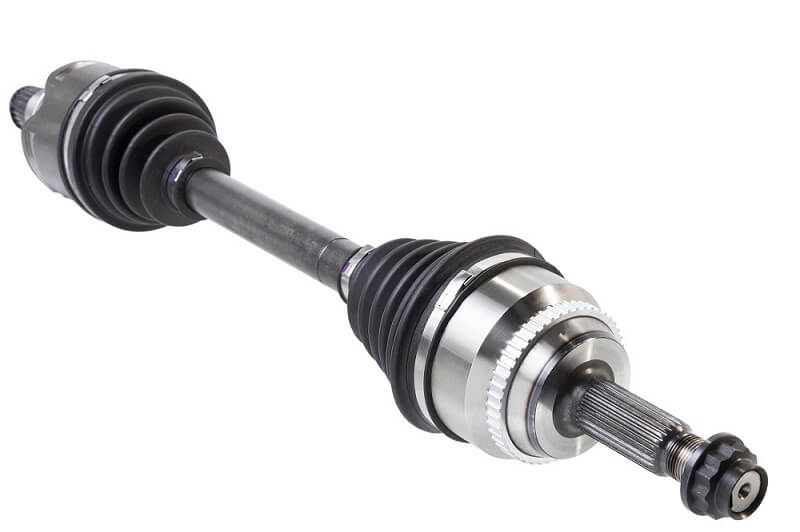What are CV Axles and how do they work?
All front wheel drive and all wheel drive cars use CV axles. “CV” is short for constant velocity. You have your engine and transmission in the car. Which are mounted to the body of the car and cannot move up and down with the suspension. [AB2] Then you have the suspension and wheels on the car, which can go up and down to absorb bumps and on the front of the car, steer. The CV axle is a shaft that has two constant velocity joints at either end of it. One end comes out of the transmission, the other end mounts in the wheel hub. The two joints let the axle continue to spin as the suspension travels up and down and you steer the car. An fwd car will have one for both the passenger side and driver’s side. An AWD car will have the same, but additionally two in the rear of the car. Each of the CV joints is covered by a rubber accordion looking boot that holds the grease in and keeps dirt and water out. Because of mileage, environment, and just wear and tear these boots can rip. When they rip, grease escapes, dirt, and water get into the CV joint and can make it wear out. This will often cause a clicking noise from the front of the car while turning.
When to replace your CV axles.
There is no set interval for changing CV axles. They simply wear out over time and unless you have your car regularly inspected by a mechanic you may not know that they have torn boots.
- You hear a clicking sound when turning while driving from the front of the vehicle
- You notice lots of heavy black axle grease inside of your wheel or on the ground around your car.
- Vibration at highway speeds.
How mechanics replace CV axles.
The mechanic will:
- Verify the axle shaft needs to be replaced.
- Remove wheel and replace the faulty axle.
- Torque all fasteners and wheels to factory specifications.
- Top off any lost transmission fluid
- Check tire pressure.
- Perform a road test.
Is it safe to drive with a worn out CV axle?
For a very short period, yes you can. However, over time, you run the risk of having the CV break and leaving you stranded. The CV axle is the only thing that transmits power from your engine and transmission to the wheels. It’s vital to keep you on the road.
When replacing cv axles keep in mind:
- Your car has multiple axle shafts, but in most cases, only one will need to be replaced.
- Even if the CV joints or boots are the only parts of the axle to fail, it is often recommended to replace the entire axle.
- CV axles in climates that have snow and use road salt can seize to the vehicle’s wheel bearing hub. It may require extra parts or labor to replace the CV axle.


Reviews
There are no reviews yet.